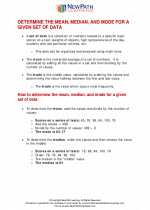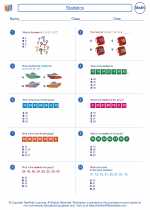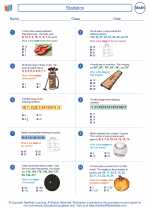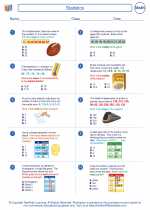Congruent Polygonal
In geometry, congruent polygonal figures are those that have the same shape and size. When two or more polygons are congruent, it means that all corresponding sides are equal in length, and all corresponding angles are equal in measure.
Properties of Congruent Polygons:
- Corresponding Sides: The sides of congruent polygons are equal in length.
- Corresponding Angles: The angles of congruent polygons are equal in measure.
- Corresponding Vertices: The vertices (corner points) of congruent polygons correspond to each other in such a way that the order of the vertices is the same, and the same side and angle is opposite each vertex.
How to Determine if Two Polygons are Congruent:
There are several methods to determine if two polygons are congruent:
- Side-Side-Side (SSS) Congruence: If the three sides of one polygon are equal in length to the corresponding three sides of another polygon, then the two polygons are congruent.
- Angle-Side-Angle (ASA) Congruence: If the measure of two angles and the length of the side between these two angles in one polygon are equal to the corresponding two angles and the length of the side between these two angles in another polygon, then the two polygons are congruent.
- Side-Angle-Side (SAS) Congruence: If two sides and the included angle of one polygon are equal in length and measure to the corresponding two sides and included angle of another polygon, then the two polygons are congruent.
- Angle-Angle-Side (AAS) Congruence: If two angles and a non-included side of one polygon are equal in measure and length to the corresponding two angles and non-included side of another polygon, then the two polygons are congruent.
Study Guide:
To study congruent polygons, it is important to understand the following concepts:
- Understanding the definition of congruent polygons.
- Identifying corresponding sides and angles of congruent polygons.
- Applying the SSS, ASA, SAS, and AAS congruence criteria to determine if two polygons are congruent.
- Practicing with geometric proofs to show that two polygons are congruent using the congruence criteria.
- Using congruent polygons to solve problems involving angles, side lengths, and real-world applications.
It is also helpful to practice with examples and exercises that involve identifying congruent polygons and applying the congruence criteria to determine if polygons are congruent.
Remember to review the properties of congruent polygons and practice applying the congruence criteria to solidify your understanding of this topic.
.◂Math Worksheets and Study Guides Sixth Grade. Statistics
Study Guide Statistics
Statistics  Worksheet/Answer key
Worksheet/Answer key Statistics
Statistics  Worksheet/Answer key
Worksheet/Answer key Statistics
Statistics  Worksheet/Answer key
Worksheet/Answer key Statistics
Statistics  Worksheet/Answer key
Worksheet/Answer key Statistics
Statistics  Worksheet/Answer key
Worksheet/Answer key Statistics
Statistics  Worksheet/Answer key
Worksheet/Answer key Statistics
Statistics 

 Worksheet/Answer key
Worksheet/Answer key
 Worksheet/Answer key
Worksheet/Answer key
 Worksheet/Answer key
Worksheet/Answer key
 Worksheet/Answer key
Worksheet/Answer key
 Worksheet/Answer key
Worksheet/Answer key
 Worksheet/Answer key
Worksheet/Answer key

The resources above cover the following skills:
Data Analysis and Probability (NCTM)
Select and use appropriate statistical methods to analyze data.
Find, use, and interpret measures of center and spread, including mean and interquartile range.